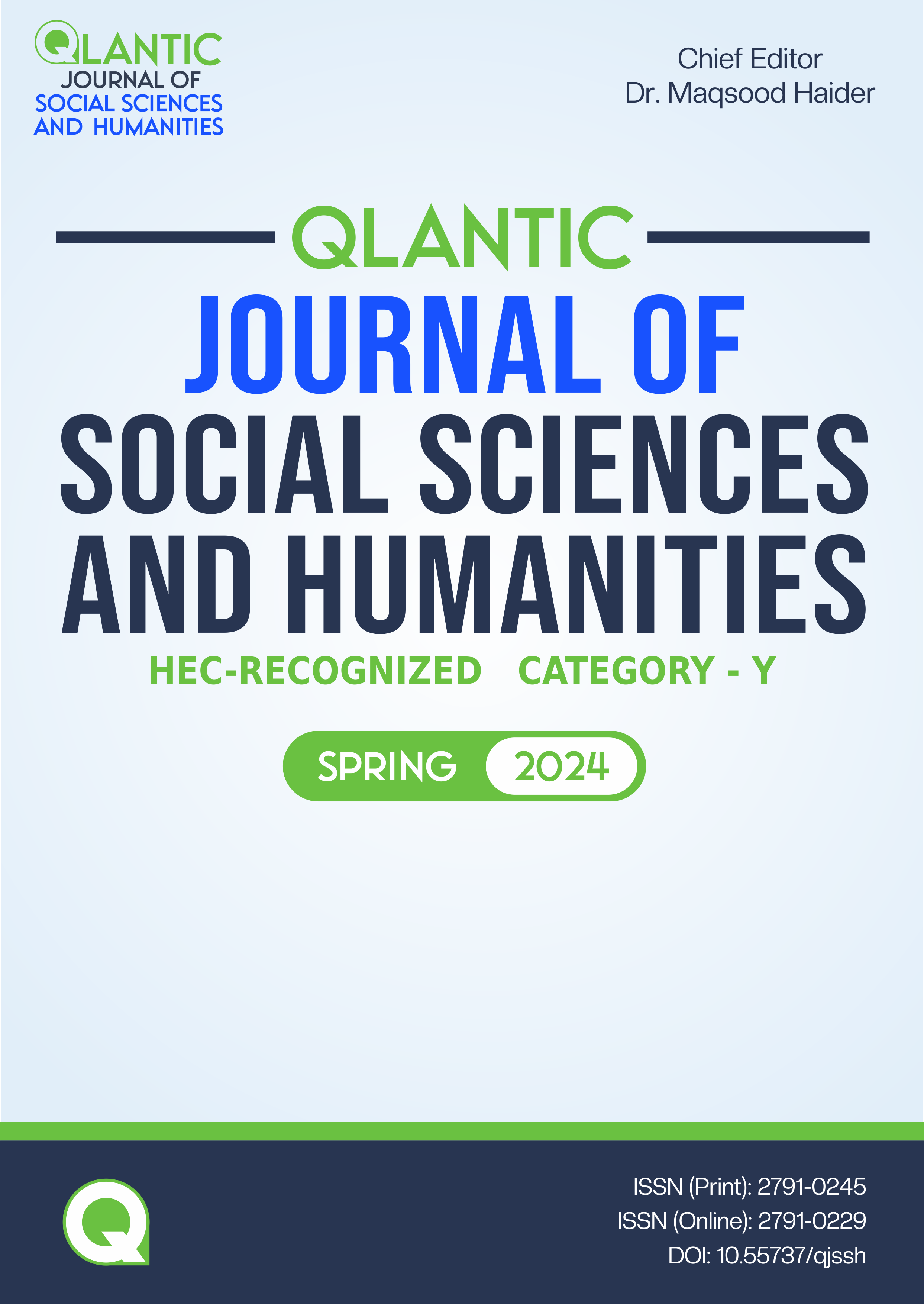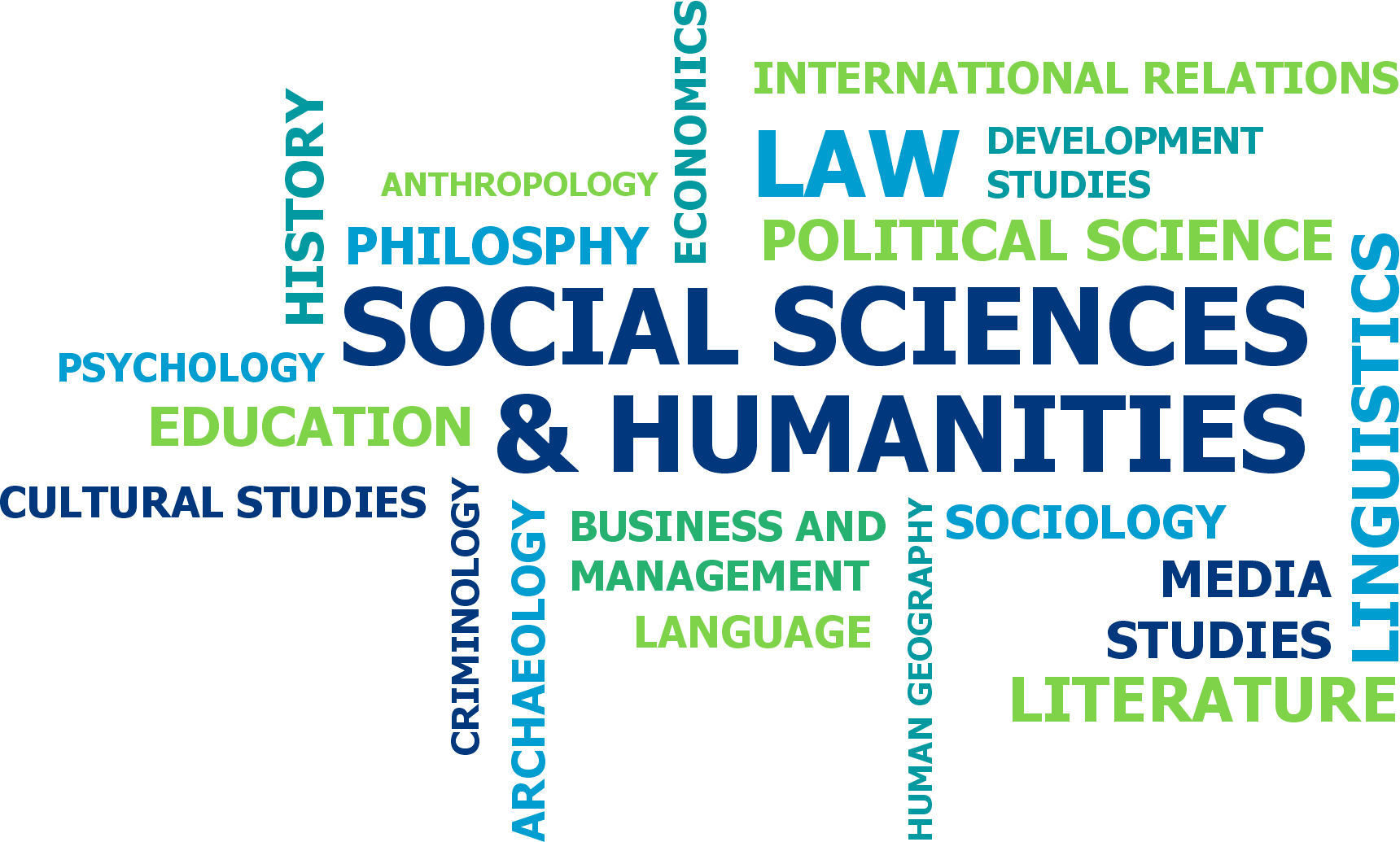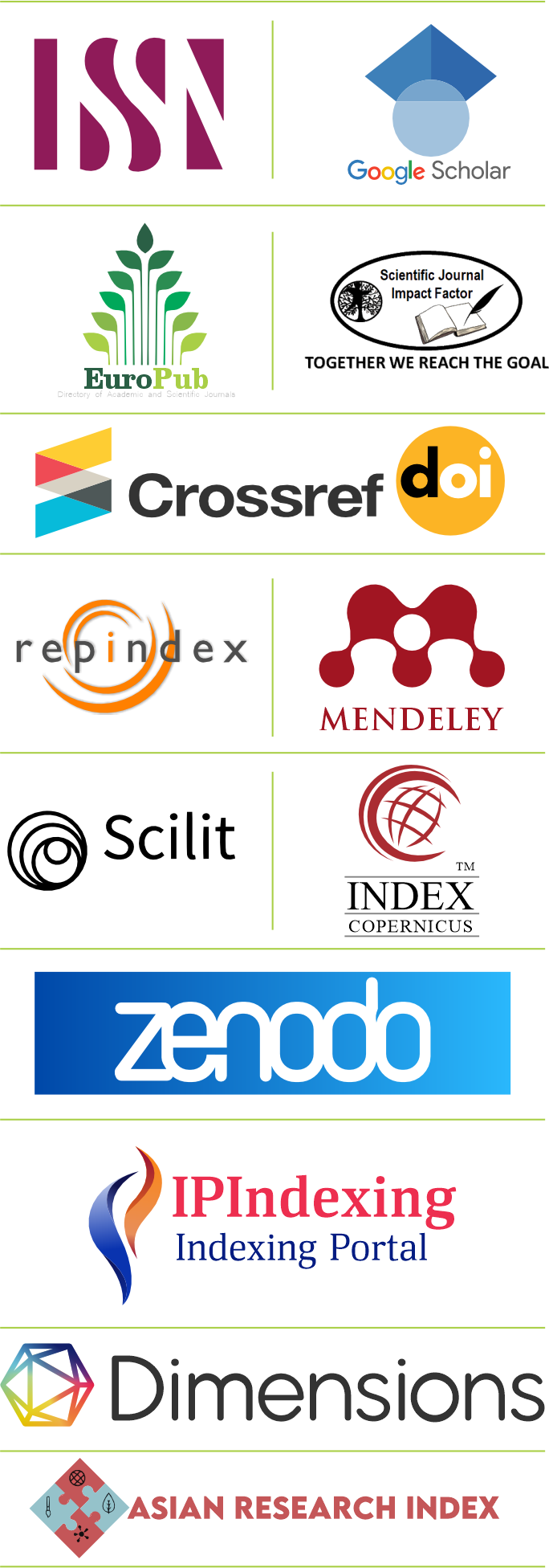Establishing an Empirical link between Financial Development, CO2 Emissions, Tourist Arrivals and Economic Growth: A Dynamic Panel Data Approach
DOI:
https://doi.org/10.55737/qjssh.777319413Keywords:
CO2 Emissions, Tourist Arrivals, Economic Growth, Financial DevelopmentAbstract
The study is an attempt to see the impact of changes in environmental, economic, trading, and financial conditions on tourist arrivals of 123 countries from Europe, America, Asia and Africa. The countries were distributed in seven distinct regions on the four continents. In order to perform an effective empirical analysis, panel data from these countries was obtained from World Development Indicators from 1999 to 2018. The results of panel cointegration revealed the presence of a long-run relationship between tourist arrivals and the explanatory variables included in the model. Environmental conditions were found to adversely affect tourist arrivals with rising CO2 emissions, whereas improvements in financial development contributed towards increased tourist arrivals. The results of the study encouraged the implication of eco-friendly policies and financial development for tourism promotion in selected 123 countries from seven regions.
References
Almeyda-Ibáñez, M., & George, B. (2017). The evolution of destination branding: A review of branding literature in tourism. Journal of Tourism, Heritage & Services Marketing, 3(1), 9–17. https://doi.org/10.5281/zenodo.401370
Anser, M. K., Adeleye, B. N., Tabash, M. I., & Tiwari, A. K. (2022). Services trade–ICT–tourism nexus in selected Asian countries: New evidence from panel data techniques. Current Issues in Tourism, 25(15), 2388-2403. https://doi.org/10.1080/13683500.2021.1965554
Apleni, L. (2017). Residents’ perceptions on urban tourism as a catalyst for economic development: A case study of Buffalo City, South Africa. African Journal of Hospitality, Tourism and Leisure, 6(3), 1-12. https://www.ajhtl.com/uploads/7/1/6/3/7163688/article_19_vol_6__3__2017.pdf
Bethapudi, A. (2013). The role of ICT in tourism industry. Journal of applied economics and business, 1(4), 67-79. https://www.aebjournal.org/articles/0104/010406.pdf
Blake, A., Sinclair, M. T., & Soria, J. A. (2006). Tourism productivity: evidence from the United Kingdom. Annals of Tourism Research, 33(4), 1099-1120. https://doi.org/10.1016/j.annals.2006.06.001
Bohlmann, H. R., & Heerden, J. H. (2008). Predicting the economic impact of the 2010 FIFA World Cup on South Africa. International Journal of Sport Management and Marketing, 3(4), 383-396. https://doi.org/10.1504/ijsmm.2008.017214
Brida, J. G., Lanzilotta, B., & Pizzolón, F. (2016). Dynamic relationship between tourism and economic growth in MERCOSUR countries: a nonlinear approach based on asymmetric time series models. Economics Bulletin, 36(2), 879–894. https://econpapers.repec.org/RePEc:ebl:ecbull:eb-16-00221
Capó, J., Font, A. R., & Nadal, J. R. (2007). Dutch Disease in Tourism Economies: Evidence from the Balearics and the Canary Islands. Journal of Sustainable Tourism, 15(6), 615–627. https://doi.org/10.2167/jost698.0
Cheng, L., & Zhang, J. (2020). Is tourism development a catalyst of economic recovery following natural disaster? An analysis of economic resilience and spatial variability. Current Issues in Tourism, 23(20), 2602–2623. https://doi.org/10.1080/13683500.2019.1711029
Choi, I. (2001). Unit root tests for panel data. Journal of International Money and Finance, 20(2), 249–272. https://doi.org/10.1016/s0261-5606(00)00048-6
Copeland, B. R. (1991). Tourism, welfare and de-industrialization in a small open economy. Economica, 58(232), 515. https://doi.org/10.2307/2554696
Endo, K. (2006). Foreign direct investment in tourism—flows and volumes. Tourism Management, 27(4), 600–614. https://doi.org/10.1016/j.tourman.2005.02.004
Eusébio, C., Rodrigues, V. M. C. P., Carneiro, M. J., Madaleno, M., Robaina, M., & Monteiro, A. (2023). The role of air quality for reaching tourism environmental sustainability: A segmentation approach based on visitors’ pro‐environmental behaviors. International Journal of Tourism Research the International Journal of Tourism Research, 25(4), 455–473. https://doi.org/10.1002/jtr.2583
Fauzel, S., & Seetanah, B. (2021). Does financial development spur tourism growth? A dynamic time series analysis for the case of an SIDS. Journal of Policy Research in Tourism, Leisure & Events/Journal of Policy Research in Tourism, Leisure and Events, 15(1), 52–68. https://doi.org/10.1080/19407963.2021.1919128
Fomum, T. A., & Opperman, P. (2023). Financial inclusion and performance of MSMEs in Eswatini. International Journal of Social Economics. https://doi.org/10.1108/ijse-10-2020-0689
Ghali, M. A. (1976). Tourism and Economic Growth: An Empirical study. Economic Development and Cultural Change/Economic Development and Cultural Change (University of Chicago. Online), 24(3), 527–538. https://doi.org/10.1086/450895
Holzer, B., & Millo, Y. (2005). From risks to second-order dangers in financial markets: Unintended consequences of risk management systems. New Political Economy, 10(2), 223–245. https://doi.org/10.1080/13563460500144777
Im, K. S., Pesaran, M. H., & Shin, Y. (2003). Testing for unit roots in heterogeneous panels. Journal of Econometrics, 115(1), 53–74. https://doi.org/10.1016/s0304-4076(03)00092-7
Jaremen, D. E., Nawrocka, E., & Żemła, M. (2020). Externalities of development of the sharing economy in tourism cities. International Journal of Tourism Cities, 6(1), 138–157. https://doi.org/10.1108/ijtc-05-2019-0068
Kendall, R. (2012). Climate change as a security threat to the Pacific Islands. New Zealand Journal of Environmental Law, 16, 83-116. https://search.informit.com.au/documentSummary;dn=319073555840293;res=IELNZC;type=pdf
Khamrang, L. (2013). Modernisation, Globalisation and Development in Bhutan: Tourism as a Catalyst. Journal of Management and Public Policy, 5(1), 5-11. https://www.questia.com/library/journal/1P3-3263319081/modernisation-globalisation-and-development-in-bhutan
Kim, H. J., Chen, M., & Jang, S. (2006). Tourism expansion and economic development: The case of Taiwan. Tourism Management, 27(5), 925–933. https://doi.org/10.1016/j.tourman.2005.05.011
Kumar, N., & Kumar, R. R. (2020). Relationship between ICT and international tourism demand: A study of major tourist destinations. Tourism Economics, 26(6), 908–925. https://doi.org/10.1177/1354816619858004
Kumar, P., Kumar, V., & Mishra, J. M. (2015). Social media: A tool for tourism marketing. International Research Journal of Business and Management, 8(11), 1-6.
Kumar, R. R. (2014). Exploring the role of technology, tourism and financial development: an empirical study of Vietnam. Quality and Quantity, 48(5), 2881–2898. https://doi.org/10.1007/s11135-013-9930-5
Kumar, R. R., & Kumar, R. (2013). Exploring the developments in urbanisation, aid dependency, sectoral shifts and services sector expansion in Fiji: a modern growth perspective. Global Business & Economics Review, 15(4), 371. https://doi.org/10.1504/gber.2013.056648
Lanza, A., Markandya, A., & Pigliaru, F. (2005). The economics of tourism and sustainable development. Edward Elgar Publishing.
Lee, C. (2021). Essays in tourism economics Student thesis: Doctoral Thesis. https://researchportal.port.ac.uk/en/studentTheses/essays-in-tourism-economics
Lee, C., & Taylor, T. (2005). Critical reflections on the economic impact assessment of a mega-event: the case of 2002 FIFA World Cup. Tourism Management, 26(4), 595–603. https://doi.org/10.1016/j.tourman.2004.03.002
Lemmetyinen, A., & Go, F. M. (2009). The key capabilities required for managing tourism business networks. Tourism Management, 30(1), 31–40. https://doi.org/10.1016/j.tourman.2008.04.005
Li, K. X., Jin, M., & Shi, W. (2018). Tourism as an important impetus to promoting economic growth: A critical review. Tourism Management Perspectives, 26, 135–142. https://doi.org/10.1016/j.tmp.2017.10.002
Maddala, G. S., & Wu, S. (1999). A Comparative Study of Unit Root Tests with Panel Data and a New Simple Test. Oxford Bulletin of Economics and Statistics, 61(S1), 631–652. https://doi.org/10.1111/1468-0084.0610s1631
Madden, G., & Savage, S. J. (2000). Telecommunications and economic growth. International Journal of Social Economics, 27(7/8/9/10), 893-906.
Ngoasong, M. Z., & Kimbu, A. N. (2016). Informal microfinance institutions and development-led tourism entrepreneurship. Tourism Management, 52, 430–439. https://doi.org/10.1016/j.tourman.2015.07.012
Nguyen, Q., & Nguyến, C. V. (2022). An analysis of the relationship between ICT infrastructure and international tourism demand in an emerging market. Journal of Hospitality and Tourism Technology, 13(5), 992–1008. https://doi.org/10.1108/jhtt-11-2021-0331
Peterson, R., Cárdenas, D., & Harrill, R. (2014). Tourism as a catalyst for Economic development in Latin America: Setting an agenda for policy and research. Tourism Analysis, 19(1), 117–122. https://doi.org/10.3727/108354214x13927625340433
Pohjola, T., Lemmetyinen, A., & Dimitrovski, D. (2020). Value co-creation in dynamic networks and E-Tourism. In Springer eBooks (pp. 1–23). https://doi.org/10.1007/978-3-030-05324-6_92-1
Rasool, H., Maqbool, S., & Tarique. (2021). The relationship between tourism and economic growth among BRICS countries: a panel cointegration analysis. Future Business Journal, 7(1). https://doi.org/10.1186/s43093-020-00048-3
Ricart, S., Villar-Navascués, R., & Rico-Amorós, A. M. (2021). Water Exchange and Wastewater Reuse to Achieve SDG 6: Learning from Agriculture and Urban-Tourism Coexistence in Benidorm (Spain). Clean Water and Sanitation, 7. https://doi.org/10.3390/books978-3-03897-775-9-1
Sáenz-De-Miera, Ó., & Nadal, J. R. (2014). Modeling tourism impacts on air pollution: The case study of PM10 in Mallorca. Tourism Management, 40, 273–281. https://doi.org/10.1016/j.tourman.2013.06.012
Sahay R, Čihák M, N’Diaye P, Barajas A, BiR, Ayala D, Bi R, Gao Y, Kyobe A, Nguyen L, Saborowski C, Svirydzenka K, Yousefi SR (2015) Rethinking Financial Deepening: Stability and Growth in Emerging Markets (IMF Staff Discussion Notes No. 15/08). International Monetary Fund. Available at https://www.imf.org/external/pubs/ft/sdn/2015/sdn1508.pdf
Shafaki, R. E., Mesbah, N., Maxim, C., & Morrison, A. M. (2024). Sustainable urban tourism in MENA countries. In Edward Elgar Publishing eBooks (pp. 496–513). https://doi.org/10.4337/9781803926742.00047
Sheng, L., & Tsui, Y. (2009). A general equilibrium approach to tourism and welfare: The case of Macao. Habitat International, 33(4), 419–424. https://doi.org/10.1016/j.habitatint.2009.01.002
Sheng, L., & Zhao, W. (2016). Strategic destination management in the face of foreign competition: the case of Macao SAR. Journal of Travel & Tourism Marketing, 33(2), 263–278. https://doi.org/10.1080/10548408.2015.1051198
Spasojević, B., Lohmann, G., & Scott, N. (2018). Air transport and tourism – a systematic literature review (2000–2014). Current Issues in Tourism, 21(9), 975–997. https://doi.org/10.1080/13683500.2017.1334762
Svirydzenka, K. (2016). Introducing a new broad-based index of financial development. International Monetary Fund.
Torrent‐Sellens, J., Ficapal‐Cusí, P., Boada-Grau, J., & Vigil–Colet, A. (2015). Information and communication technology, co-innovation, and perceived productivity in tourism small and medium enterprises: an exploratory analysis. Current Issues in Tourism, 19(13), 1295–1308. https://doi.org/10.1080/13683500.2015.1029878
Van Der Sterren, J. (2008). Financial markets, microfinance and tourism in developing countries. ARA Journal of Tourism Research, 2(4), 35–44. https://dialnet.unirioja.es/servlet/articulo?codigo=6852906
Van Truong, N., & Shimizu, T. (2017). The effect of transportation on tourism promotion: Literature review on application of the Computable General Equilibrium (CGE) Model. Transportation Research Procedia, 25, 3096–3115. https://doi.org/10.1016/j.trpro.2017.05.336
Wijerathna, & Dharmarathna. (2023). Effect of the financial development on carbon emission: An empirical investigation from a global perspective. Journal of Accountancy & Finance, 10(1), 1-18. https://doi.org/10.57075/jaf1012301
Published
Issue
Section
License

This work is licensed under a Creative Commons Attribution-NonCommercial 4.0 International License.





